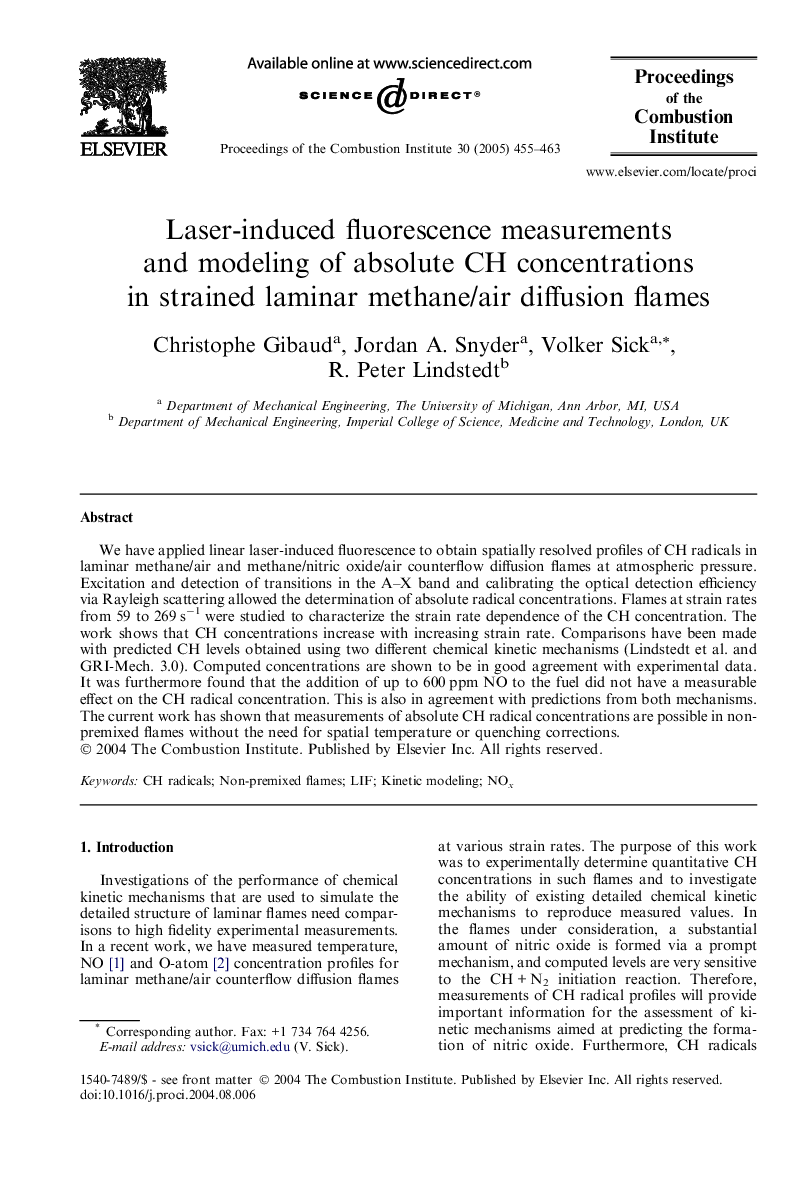| Article ID | Journal | Published Year | Pages | File Type |
|---|---|---|---|---|
| 9637366 | Proceedings of the Combustion Institute | 2005 | 9 Pages |
Abstract
We have applied linear laser-induced fluorescence to obtain spatially resolved profiles of CH radicals in laminar methane/air and methane/nitric oxide/air counterflow diffusion flames at atmospheric pressure. Excitation and detection of transitions in the A-X band and calibrating the optical detection efficiency via Rayleigh scattering allowed the determination of absolute radical concentrations. Flames at strain rates from 59 to 269Â sâ1 were studied to characterize the strain rate dependence of the CH concentration. The work shows that CH concentrations increase with increasing strain rate. Comparisons have been made with predicted CH levels obtained using two different chemical kinetic mechanisms (Lindstedt et al. and GRI-Mech. 3.0). Computed concentrations are shown to be in good agreement with experimental data. It was furthermore found that the addition of up to 600Â ppm NO to the fuel did not have a measurable effect on the CH radical concentration. This is also in agreement with predictions from both mechanisms. The current work has shown that measurements of absolute CH radical concentrations are possible in non-premixed flames without the need for spatial temperature or quenching corrections.
Related Topics
Physical Sciences and Engineering
Chemical Engineering
Chemical Engineering (General)
Authors
Christophe Gibaud, Jordan A. Snyder, Volker Sick, R. Peter Lindstedt,
